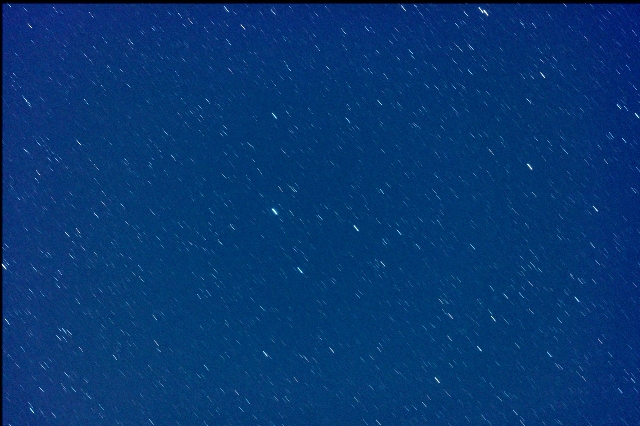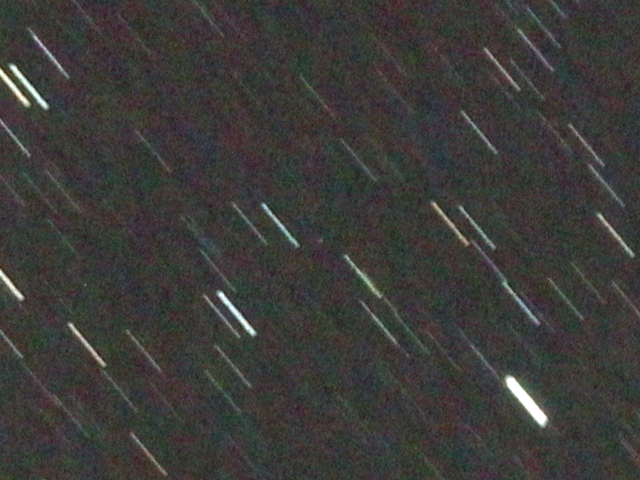


(153349) <2001 PJ9>(2013)15.13等
2013/08/01T22:18:58.06〜22:39:32.99までの60秒間露光20枚を合成
露光時間:60秒*20=20分
ε160/530mm + LPS-P2 + 60D/ISO800 / EM200Temma2
StellaImage4で合成、レベル補正とリサイズ
|
(153349)2001 PJ9
(153349) 2001 PJ9 was discovered by NEAT at Palomar on August 10, 2001. Its physical characteristics are
effectivley unknown except for its absolute magnitude of 18.0, which suggests a diameter within a factor
of two of about 800 meters.
This asteroid will approach within 0.075 AU (29 lunar distances) on July 17. 2001 PJ9 should be strong enough at Goldstone to obtain CW data and coarse-resolution ranging observations, but it's unlikely that the SNRs will be strong enough to obtain detailed images. The SNRs at Arecibo could be strong enough for coarse-resolution imaging. Four tracks are scheduled at Goldstone between July 17-20. Two tracks are scheduled at Arecibo on July 6 and 7. 2001 PJ9 will be too close to the Sun for optical observations until mid-July. After that, it should brighten to 15th magnitude and reach solar elongations exceeding 130 degrees by the end of July, when it will be a good target for lightcurves and spectroscopy. The plane-of-sky pointing uncertainties are a bit large for this object but we expect that Arecibo will detect echoes in early July and reduce the uncertainties significantly before the Goldstone observations start. Orbital and Physical Characteristics orbit type Apollo semimajor axis 1.800 AU eccentricity 0.639 inclination 10.5 deg perihelion distance 0.650 AU aphelion distance 2.950 AU absolute magnitude (H) 18.0 diameter 800 m (+- a factor of two) rotation period unknown pole direction unknown lightcurve amplitude unknown spectral class unknown |
2013年08月01日


